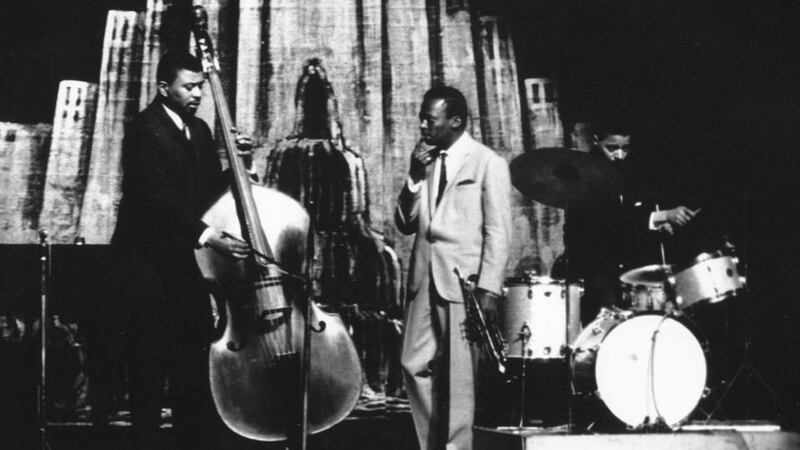The passage of time, and the shocking mortality rate among jazz musicians in mid-20th century New York, have conspired to leave drummer Jimmy Cobb in a unique position. At 84, he is the last living link to what is, by common assent, the most celebrated and influential jazz recording of all time, Miles Davis's modal masterpiece Kind of Blue.
The series of untimely deaths that robbed the music of John Coltrane (died 1967, aged 40), Paul Chambers (died 1969, aged 33), Wynton Kelly (died 1971, aged 39), Cannonball Adderley (died 1975, aged 46), Bill Evans (died 1980, aged 51), and eventually the indomitable Davis (died 1991, aged 65) mean that, for more than 20 years now, Cobb has been the sole survivor of that fabled 1959 recording session.
Relaxing in front of the television in his New York apartment with the phone cupped to his ear, Jimmy Cobb sounds tired – tired, principally, of not being able to remember much about that session.

“I can’t remember yesterday,” he says, laughing.
Not that the Washington DC-born drummer hasn't been stout in defence of the Kind of Blue legacy: for many years, he has led his So What band, named after the album's defining track; he recently wrote a preface to writer Ashley Khan's forensic book about the session (which, in any case, has enough detail to satisfy the most inquisitive listener); and any announcements that precede his live appearances nowadays usually get to Kind of Blue within the first sentence or two.
But it would be understandable if the burden of trying to recall in detail two days work he did 55 years ago sometimes weighed a little heavy on his shoulders. So is he tired of talking about Kind of Blue?
'Just another recording date'
"Yes," he admits bluntly. But he follows his admission with the hearty laugh of one who knows that his illustrious past is not something from which he could escape, even if he wanted to.
However, his memories of the two sessions that produced the album are hazy at best, and he says it is hard for him sometimes to know what he actually remembers and what he has subsequently gathered from all the analysis to which his most famous two days’ work has been subjected.
“It was just another recording date,” he says. “I was probably really nervous, because I was going on a recording date with Miles Davis and, you know, you have to be a little nervous. You just want to be able to perform to the best of your ability. But it was just another date. Most of Miles’s recordings were good. Nobody in the band would ever have thought that, 55 years later, it would be as strong as it still is.”
In the run up to the recording, there was nothing to suggest that this session would differ much from previous studio dates. Davis, as usual, had issued minimal instructions in advance. His musicians frequently didn’t find out what they were playing, or with whom, until they walked into the studio.
On March 2nd, 1959, the first of two sessions that produced the album, the group gathered in the converted church in downtown Manhattan that served as Columbia’s recording studio and Davis handed out a few scraps of paper that he and pianist Bill Evans had been poring over.
One or two takes
Cobb didn't even get that. He remembers being told before Blue in Green that "this is a ballad; make it sound like it's floating", and that was all. Every track was recorded in one or two takes, while the musicians were still learning the music.
It was an example of perhaps the trumpet player’s greatest quality as a band leader: he knew how to create situations where he would get honesty and creativity from his musicians. Few of them ever played as well again as they did when they played with Davis.
“He knew they was great enough to do anything he asked them to do, so that’s how it came out. John [Coltrane] was a phenomenal guy back then. He was still working on his own thing but he was able to do whatever Miles wanted, so the whole thing was beautiful.”
It is perhaps appropriate that Cobb's memories of the Kind of Blue sessions are kind of dim. A jazz performance is the very definition of ephemeral, and only recording technology enables us to play it back again.
For Davis and his musicians, it was a moment in time that would never be repeated. Ever restless, the trumpeter did not stay in the cool waters of the Dorian mode for long, and by the time Kind of Blue was released, the 1960s were dawning, and the other two great innovators on the record, Coltrane and Evans, had both moved on to form their own groups.
Nor does it seem likely that there will ever be another jazz recording as famous as Kind of Blue. With so much music happening around the world, and technology now common in home studios that would have made the Kind of Blue engineers gasp with wonder, it's hard to imagine any single recording emerging to distil the sound of an era like it did. So alone it stands, the greatest jazz album of all time.
And alone stands its drummer, trying to remember where he put the TV remote.
Jimmy Cobb appears at the Sugar Club, Dublin at 8pm today, with Pee Wee Ellis, Ike Stubblefield and Grant Green jnr. thesugarclub.com


















